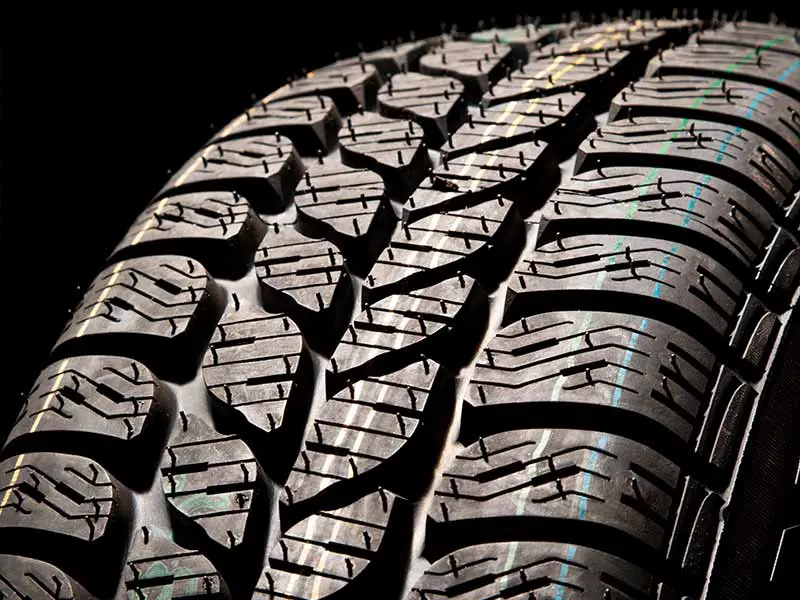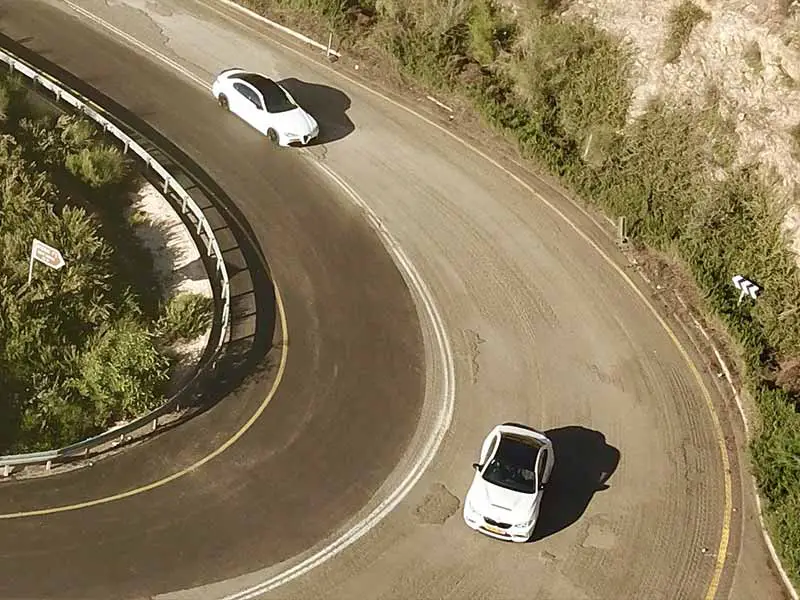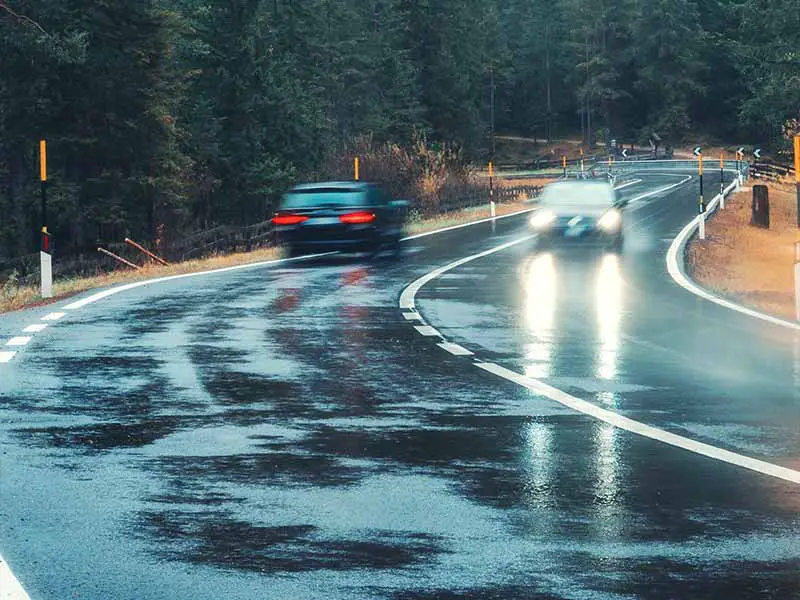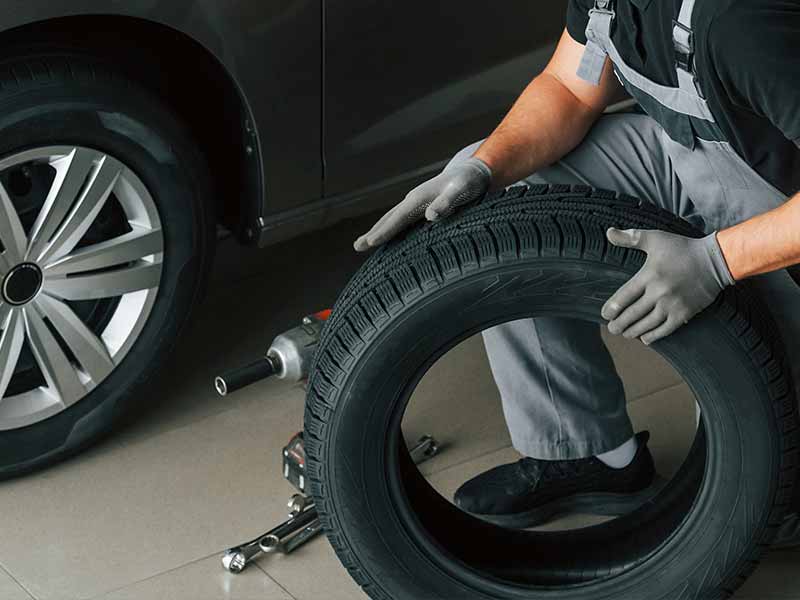Purchasing a new set of tires is kind of like buying a new pair of shoes. They will feel slightly uncomfortable and different at first. Driving with new tires may make your car feel loose, slippery, or squirmy.
After a short adjustment period, most people will become more accustom to how their replacement tires feel and sound, and the tires will settle in and provide their maximum performance.
Breaking In New Tires
We recommend driving conservatively for the first 500 miles. This allows the rubber release lubricant and other chemicals to wear off the surface of the tires.
This will also allow you to become accustom to the performance characteristics of the replacement tires.
Some drivers commonly have some questions or concerns about the break in period and when the tires will begin working their best.
Let’s take a closer look.

Do New Tires Need To Be Broken In?
While there might be an instinct to burn some rubber when getting new tires on your car, this can be dangerous if the tires are not broken in. A driver must know why tires need to be broken in and how to do it properly.
Continental Tires affirm there are a number of factors that can make the new set of tires on your vehicle perform differently than the old ones you already have. The 3 main factors that Continental highlights are:
- Antioxidants/Antiozonates: Antioxidants and antiozonates are used to protect the new tires from breaking down under temperature fluctuations and exposure to oxygen and ozone in the atmosphere. These substances can make the tires feel slick at first usage.
- Lubricants: Newly formed tires are very hard to remove from their mold upon fabrication. That’s why tire manufacturers have to use “release lubricant” to safely remove the fresh tires from their molds during the production process. This lubricant stays on the tire until it is removed under normal driving.
- Tread depth: When they are first installed, tires are at their maximum tread depth. And while this might sound like a good thing, too much tread depth can cause “squirm”, which represents excess movement caused by the flexibility of the rubber between the carcass and the tread surface.
How Long To Break In New Tires
The lubricants on and additives in the rubber, as well as the significant change in tread block height make it a good idea to break in new tires and become acquainted with how the new performance characteristics feel.
While there is no generally approved distance to break in new tires, common advice given is that you should drive conservatively for the first 500 miles to ensure all the chemicals and lubricants are worn off from your new tires and you are accustom to the traction characteristics as compared to the older tires.
Normal driving means without acceleration, brake, or taking turns too quickly. A nice and smooth driving should be maintained during the break-in period.

New Tire Break-In Procedure
One of the best ways to break in your tires is to focus on easy, gentle driving for the first 500 miles, using smooth acceleration, braking and cornering.
After 500 miles, the lubricants and other chemicals used in manufacturing should be completely removed from the surface of your new tires.
It’s recommended to:
- Drive only on dry roads, if possible.
- Drive at conservatively.
- Leave a larger gap between you and other vehicles on the road.
You should avoid:
- Hard acceleration.
- Hard braking, if possible.
It’s important to avoid doing either of these things for the breaking period, as the lubricants used in the tire manufacturing could cause some tire/rim slip if you slam on the brakes or floor it.
New Tires Feel Unstable
After replacing the worn tires that had very little tread depth remaining, the replacement tires will feel quite different even if they’re the same brand and model of tire you have just replaced.
Tires with very little tread respond a bit quicker to the driving commands, because there’s less tread that needs to flex during quick turns and cornering.
New tires with a deeper tread have an increased tendency of flexing or “tread squirm”, therefore, they may feel less responsive than your old tires.
That means you should exercise caution even if you’re excited to get out there and test the new tires. It’s in your best interest to take it easy for the first 500 miles to allow your tires to break in naturally and for you to become accustom to the new performance characteristics and ride quality.

New Tires In Rain
Old tires need to be replaced because they provide very little grip on wet roads and can lead to losing control of the vehicle in wet conditions. However, new tires are just as dangerous when they are covered in lubricants and other chemicals that might make them slippery on wet roads, even with increased tread depth.
This is why it’s recommended to break in new tires on dry roads and avoid wet conditions if possible until the tires have worn away the surface lubricants and chemicals so they can provide better grip.
There’s no need to park your car or truck if you are leaving the tire shop with your new tires and it’s raining. Just use a little extra care on wet roads for the first few hundred miles.

Do New Tires Make Noise Until Broken In?
New tires can make a different sounds or more noise than the old tires due to different tread patterns and tire compounds.
New tires can also bring to surface old noises that were otherwise covered by the old tires. For instance, if you replace only two tires and rotate the remaining tires to different positions, uneven wear or other problems may cause unusual sounds.
If you’re hearing tire noise, it could be attributed to the compound of the tires and tread design. If the tires are brand new, make sure you give them the time to break in before passing final judgment, as some tires will get quieter after this period.
If the problem persists after the break-in period, you should consult the professionals at your local tire shop to identify the problem.
Resources
Below are some links you may find helpful when learning about tires
- How to break in new tires – Discount Tire
- Like a new pair of shoes, tires need to be broken in too – Continental Tire
Final Thoughts
Many people will have their old tires replaced and hardly notice much of an adjustment period at all. Others that are more sensitive to minor differences may feel a slight lack of driving confidence caused by a bit more tire squirm caused by the taller tread blocks.
No matter which camp you fall into, you and your new set of tires will become familiar with each other in a short period of time and will likely be enjoying many miles together.
Good luck and happy motoring.





